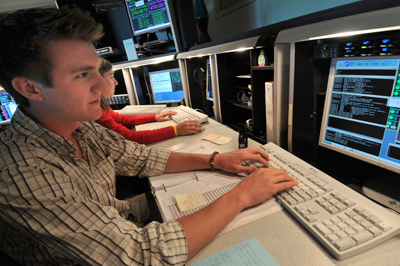
September 2011 marks a significant milestone for LASP, as our Mission Operations and Data Systems (MODS) team celebrates 15 years of continuous spacecraft operations. From long-standing science missions, such as ICESat, which have brought in important data over years—to newer missions, such as Kepler’s exciting search for Earth-like planets—LASP MODS has offered reliable spacecraft operations to agencies including NASA.
As a “full-cycle” space research institute, LASP is involved in all aspects of space exploration. Our scientists consistently seek answers through new discoveries and our engineers build, test, and calibrate the necessary hardware to maximize scientific return. In the end, however, the primary focus of space missions is not the excitement, adventure, or challenge of designing and launching spacecraft: it is the many years of scientific data they return to us, and the information scientists draw from this data.
According to Bill Possel, Director of MODS at LASP, one of the most exciting and unusual aspects of spacecraft operations at LASP is the opportunity for CU undergraduate students to become certified mission operators.
“Our record of 15 years of continuous spacecraft mission operations is unique among universities,” Possel said. “Over that time, we have provided low-cost, highly reliable mission operations and at the same time trained the next generation of space professionals.”
LASP student operators, who must pass a summer-long course held at LASP, work under the supervision of professional staff to operate over a billion dollars worth of spacecraft. “It’s a win-win for NASA and our students,” Possel said.
LASP currently operates 4 NASA spacecraft, including the AIM, Kepler, SORCE, and QuikSCAT missions, and 14 space science instruments. Over the past 15 years, LASP has been responsible for operating over thirty spacecraft and instruments from our facilities.
For more information on MODS, please see
https://lasp.colorado.edu/mission-ops-data.
For a complete list of LASP mission and project history, please see
https://lasp.colorado.edu/about/mission-history.



